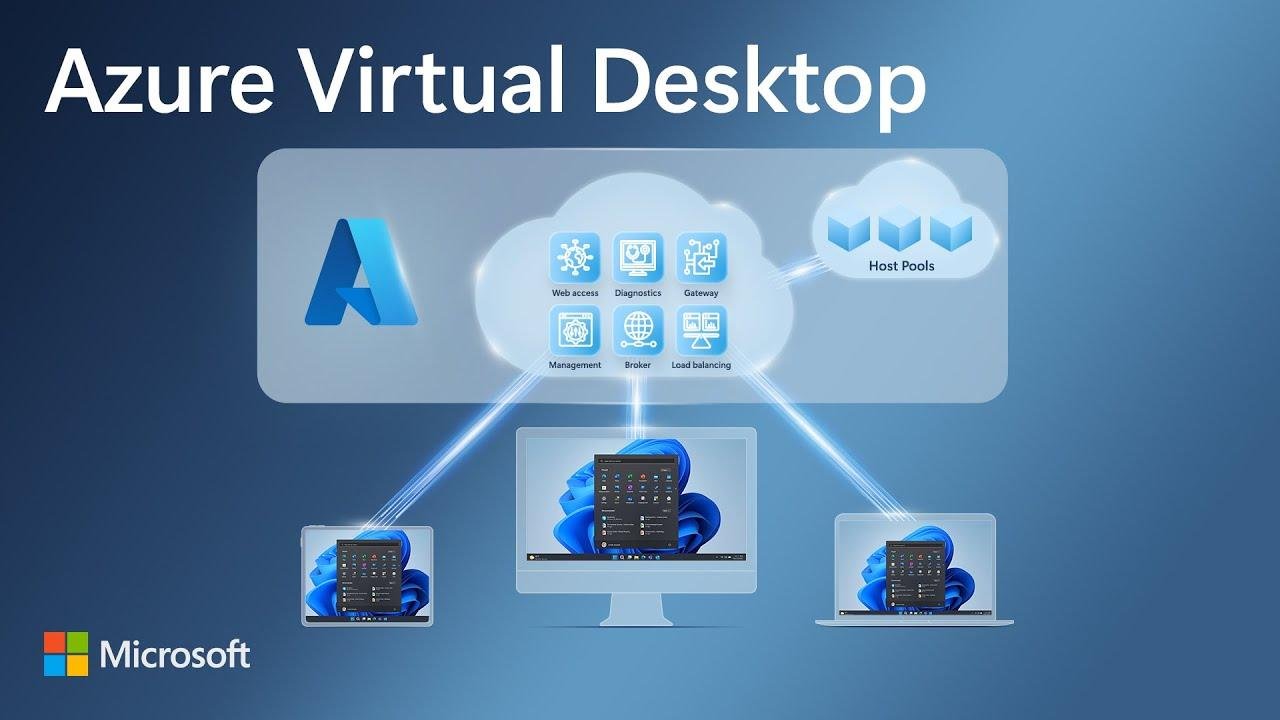In a world where remote work has transformed from a privilege to a necessity, organizations are seeking innovative solutions to ensure their teams remain productive and secure, nonetheless of their location. One such solution is Windows Virtual Desktop (WVD),an offering from Microsoft Azure that allows users to access their workplace environments from anywhere in the globe. this powerful technology not only enhances user experience but also addresses the escalating demand for flexible work arrangements, especially in the wake of global challenges like the COVID-19 pandemic.In this blog post, we delve into the insights shared in the recent Azure Friday episode featuring Christiaan Brinkhoff, who breaks down the architecture, functionality, and advantages of windows Virtual Desktop. From its ability to provide robust load balancing and multi-session support to its enterprise-ready features, WVD is revolutionizing how businesses approach remote work and virtualization. Join us as we explore how this technology is paving the way for a more adaptable workforce, and how it can be the key to driving success in an ever-evolving landscape.
Understanding the Strategic Importance of Windows Virtual Desktop in Remote Work Environments

In today’s rapidly evolving business landscape, the demand for seamless remote work capabilities has driven organizations to seek innovative solutions. Windows Virtual Desktop stands out as a pivotal tool, enabling employees to access their workspaces securely from any location worldwide. This solution leverages Azure to provide a robust and efficient user experience, especially crucial during times when remote work has surged, such as the COVID-19 pandemic. By facilitating instantaneous access to virtual machines, businesses can ensure continuity and productivity, allowing employees to perform their tasks as if they where still in the office.
The architecture of Windows Virtual Desktop further enhances its effectiveness; it incorporates a control plane that manages various essential functions such as load balancing and resource sharing. Unlike typical virtual machines where users might face performance bottlenecks due to a lack of these integrated features, windows Virtual Desktop provides multi-session support and resource allocation that scales with the organization’s needs. By enabling secure access from a variety of endpoints-including Windows, Mac, and Android devices-this technology not only simplifies remote work logistics but also extends an organization’s operational capabilities beyond traditional confines.
Leveraging Azure for Enhanced Security and Global Accessibility

The implementation of Azure’s Windows Virtual Desktop revolutionizes how organizations approach remote work by providing a secure and efficient workspace accessible from virtually anywhere in the world. with the surge in demand for remote working solutions, especially during the COVID-19 pandemic, Azure offers an unparalleled user experience that seamlessly integrates various devices, including Windows, Mac, and Android.This remarkable adaptability allows businesses to empower their workforce, ensuring that employees can securely access their virtual desktops and applications from home without compromising on performance or security.
What sets Windows Virtual Desktop apart from traditional virtual machines is its ability to manage multiple sessions concurrently while maintaining robust load balancing and resource sharing capabilities. The **control plane** facilitates crucial functions such as management, brokering, and access diagnostics, rendering it highly suitable for enterprise environments. This structured architecture enables companies to effortlessly scale their virtual workspace in response to fluctuating demands, ensuring that employees have the tools they need to remain productive, no matter their location. Key benefits include:
- Enhanced security protocols for remote access
- Multi-session Windows 10 capabilities for efficient resource utilization
- Cross-platform support for varied operating systems
Key features that Set Windows Virtual Desktop Apart from Traditional Virtual Machines

Windows Virtual Desktop transforms the way organizations manage their work environments, distinguishing itself from traditional virtual machines through its seamless and flexible infrastructure. one of the key **aspects** is its capability for **multi-session governance**, which allows multiple users to access a single Windows 10 instance concurrently. This not only optimizes resource utilization but also provides a consistent user experience that might not be achievable with individual virtual machines. Furthermore, the **control plane** of Windows Virtual Desktop enhances reliability and scalability with features such as load balancing and globally distributed brokering, ensuring enterprises can swiftly adapt to the demands of remote work without compromising performance.
Security is another critical feature that sets Windows Virtual Desktop apart, especially in an era where remote work has surged due to global events. With Azure providing a robust foundation, organizations can confidently enable their employees to access corporate resources from anywhere in the world while maintaining strict compliance and governance. The ability to manage and provision thousands of users efficiently means that companies can pivot quickly in response to change, empowering their workforce without the logistical nightmares that can accompany traditional virtual machine setups. This empowers businesses to remain competitive and resilient in a rapidly evolving market.
Best Practices for Implementing and Managing Windows Virtual Desktop Solutions

Implementing Windows Virtual desktop (WVD) solutions comes with an array of best practices that can significantly enhance user experience and operational efficiency. First and foremost, it is essential to leverage **Azure’s global infrastructure** for optimal performance. This ensures that users can securely access their workspaces from anywhere in the world, a critical feature in today’s remote work environment. When setting up your virtual desktops, consider utilizing the **multi-session capabilities** of Windows 10, which allows multiple users to connect to a single virtual machine, effectively optimizing resource usage. Additionally, implementing robust load balancing mechanisms can prevent performance bottlenecks and ensure a seamless user experience during peak usage times.
Moreover, proper management of your virtual desktop environment is vital to maintain productivity. Establishing a **control plane** with clear roles for management, brokering, and diagnostics can streamline your operations significantly. Regularly monitoring usage and performance metrics will help in identifying bottlenecks or inefficiencies. To further enhance security, consider integrating **multi-factor authentication (MFA)** to safeguard sensitive data accessed via virtual desktops. Furthermore, always keep user feedback in mind; by understanding their pain points, you can adapt and fine-tune the WVD setup to better meet their needs. These practices not only ensure a robust virtual workspace but also empower your workforce to be more agile and responsive in an ever-changing work landscape.
Closing Remarks
In wrapping up our exploration of Windows Virtual Desktop (WVD) and its transformative impact on remote work, it’s clear that the need for flexible and secure access to workspaces has never been more critical.As highlighted in the insightful conversation with Christiaan Brinkhoff, WVD is not just a tool-it’s a lifeline for businesses navigating the complexities of a changed work landscape.From enhancing productivity to ensuring robust security across various endpoints, windows Virtual Desktop allows organizations to remain agile and responsive in a world that increasingly demands remote capabilities. The architecture behind WVD, which supports efficient load balancing and resource sharing, sets it apart from traditional virtual machines, making it an ideal solution for enterprises facing sudden shifts to remote operations.As we continue to adapt to new working paradigms, embracing technologies like WVD will be essential for staying competitive. Thank you for joining us on this journey to understand how Windows Virtual Desktop can empower businesses and employees alike. Stay tuned for more insights and innovations in the ever-evolving world of technology!
